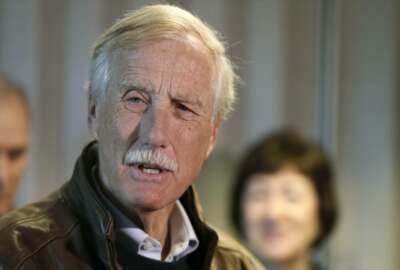
Pre-pandemic CIO Council report nearly predicted SD-WAN’s usefulness to agencies
Education Department CISO Steven Hernandez said the council wanted to plan for the next five to 10 years of agency network priorities and how to prepare for an...
When the federal Chief Information Officers Council released its “Networks of the Future” white paper in late 2019, members may have known its contents were urgent. Months later, the coronavirus proved them right, and it now appears the council had a crystal ball.
Education Department Chief Information Security Officer Steven Hernandez said that sometimes, enough brilliant minds in the same room can predict the future. The council wanted to plan for the next five to 10 years of agency network priorities and how to prepare for an emergency. Hernandez told Federal News Network Executive Editor Jason Miller there were four big conclusions that emerged.
“The first one is understanding that technology landscape. Of course, this is the theme of modernization. We also see this in the President’s Management Agenda,” Hernandez said on Federal Monthly Insights – Network Modernization and SD-WAN. “IT modernization is absolutely key, but to modernize we need to understand the capabilities that are out there and then how we get to that next level. So whether it’s 5G, SD-WAN and moving to fiber and Ethernet, all of these types of concepts must first be understood before we can get there.”
SD-WAN, short for Software Defined Wide Area Networking, connects an organization’s separate locations for users running cloud applications or relying on open internet via mobile devices. This is expected to replace the traditional system in which corporate networks connect multiple locations using “centralized control, routing and security with all network traffic being routed through a main data center,” according to the CIO Council white paper.
The report’s second conclusion was the need to manage networks in a more agile way. Hernandez said pilots, which allow agencies to “fail fast, fail small, fail safe” are useful to this end. Thirdly, the council determined continuous learning and upskilling for network managers and operators was important.
“You need to know a lot more about coding, now. You need to understand infrastructure as a code. Probably some DevSecOps wouldn’t hurt, either,” he said on Federal Drive with Tom Temin.
Lastly, the report concluded that making sure agency CIOs are collaborating with the General Services Administration — for successful acquisition approaches toward new technology — which makes a difference.
“To get to the solutions we need, we need to make sure we have the right vehicles, we need to make sure that we have the right contracting officers that understand the technology, and we need to make sure we have that right awareness in our acquisition groups so that when we come forward and we say, ‘Hey, we’re ready to move to 5G or Software Defined Network,’ we have the right vehicles and the right support to do that,” he said.
If an organization is in the cloud, there’s a good chance they already deal with SD-WAN, Hernandez said. And a software-defined environment is also necessary for a zero trust environment, which has been stressed across the government as a better way to think about network access. When assessing how much control network managers have over their system — its endpoints and who has access — SD-WAN can keep a user in a virtual “parking lot” until credentials and identity can be verified.
“Without [SD-WAN] and the software defined pieces that accompany it, none of this is a reality for us,” Hernandez said. “So it’s a foundational piece from the security perspective and even when we look at technologies like network access control, some of the more traditional aspects of controlling access on a network, we have situations where Software Defined Network brings time to resolution and time to contain them containment much faster than traditional solutions.”
Copyright © 2025 Federal News Network. All rights reserved. This website is not intended for users located within the European Economic Area.
Amelia Brust is a digital editor at Federal News Network.
Follow @abrustWFED




